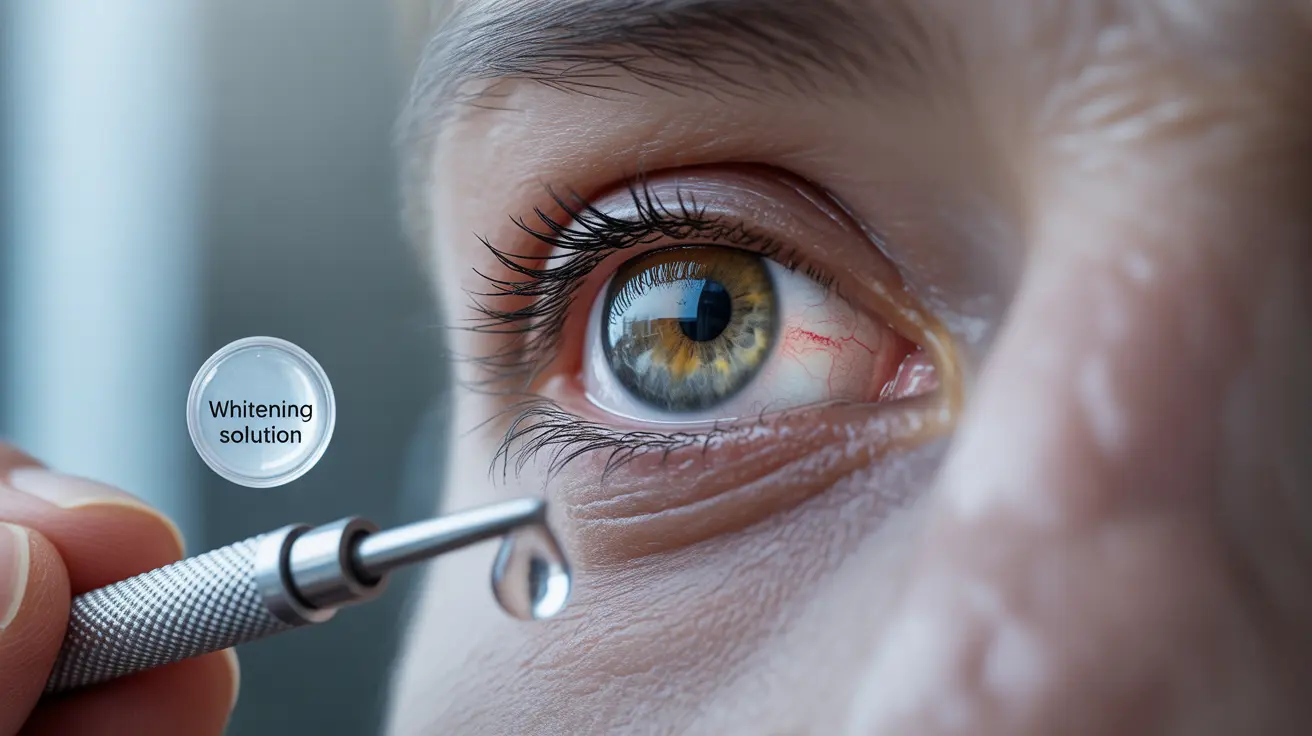If you're dealing with red, irritated eyes and seeking a quick solution, eye whitening drops might seem like an appealing option. These specialized eye drops are designed to reduce redness and create a brighter, whiter appearance of the eyes. However, understanding how they work and using them safely is crucial for maintaining good eye health.
This comprehensive guide will explore everything you need to know about eye whitening drops, including their mechanisms, safety considerations, and proper usage guidelines. We'll help you make an informed decision about whether these drops are right for you.
How Eye Whitening Drops Work
Eye whitening drops, also known as decongestant eye drops, contain active ingredients called vasoconstrictors. These compounds work by temporarily shrinking the blood vessels on the surface of your eye, reducing the appearance of redness. Common active ingredients include tetrahydrozoline and naphazoline.
When applied, these drops typically start working within minutes, creating a noticeably whiter appearance that can last for several hours. However, it's important to understand that they address the symptom of redness rather than treating any underlying causes.
Types of Eye Whitening Drops
Over-the-Counter Options
Over-the-counter eye whitening drops are readily available at pharmacies and typically contain mild vasoconstrictors. These products are designed for occasional use and temporary relief from minor eye redness caused by:
- Environmental irritants
- Minor allergies
- Computer eye strain
- Lack of sleep
Prescription Formulations
Prescription eye whitening drops contain stronger active ingredients and are typically prescribed for specific medical conditions. These drops undergo more rigorous testing and may be more appropriate for certain eye conditions that require ongoing treatment.
Safety Considerations and Risks
While eye whitening drops can provide quick cosmetic results, they come with several important safety considerations:
- Rebound redness when overused
- Potential masking of underlying conditions
- Risk of dependency
- Possible allergic reactions
- Eye irritation with prolonged use
It's essential to follow the recommended usage guidelines and consult with an eye care professional if you experience persistent redness or irritation.
Proper Usage Guidelines
To safely use eye whitening drops and minimize potential risks:
- Never exceed the recommended dosage
- Use only as directed on the package
- Keep track of how often you use them
- Don't share eye drops with others
- Replace bottles after 30 days of opening
- Store properly at recommended temperatures
Alternative Solutions
Before relying on eye whitening drops, consider these natural alternatives for maintaining eye health:
- Getting adequate sleep
- Using artificial tears for lubrication
- Taking regular screen breaks
- Protecting eyes from irritants
- Maintaining good eye hygiene
- Staying hydrated
Frequently Asked Questions
How do eye-whitening drops work, and what are they commonly used for?
Eye-whitening drops work by using vasoconstrictors to narrow blood vessels in the eye's surface, reducing redness. They're commonly used for temporary relief from environmental irritants, minor allergies, and fatigue-related redness.
Are eye-whitening drops safe for long-term use, or what are the potential side effects?
Long-term use of eye-whitening drops isn't recommended as it can lead to rebound redness, dependency, and increased eye irritation. Side effects may include burning, stinging, and potential damage to blood vessels with prolonged use.
What's the difference between over-the-counter and prescription eye-whitening drops?
Over-the-counter drops contain milder vasoconstrictors for temporary relief, while prescription drops have stronger formulations designed for specific medical conditions. Prescription drops undergo more rigorous testing and are typically used under medical supervision.
Can eye-whitening drops help with conditions like allergies or infections, or are they just for redness?
While eye-whitening drops can temporarily reduce redness from allergies, they don't treat the underlying cause or help with infections. For allergies or infections, specific antihistamine or antibiotic eye drops prescribed by a doctor are more appropriate.
How often is it safe to use eye-whitening drops, and what are the risks of overuse?
Eye-whitening drops should be used no more than 4 times per day and for no longer than 72 hours continuously. Overuse risks include rebound redness, dependency, and potential damage to eye blood vessels. If eye redness persists, consult an eye care professional.




